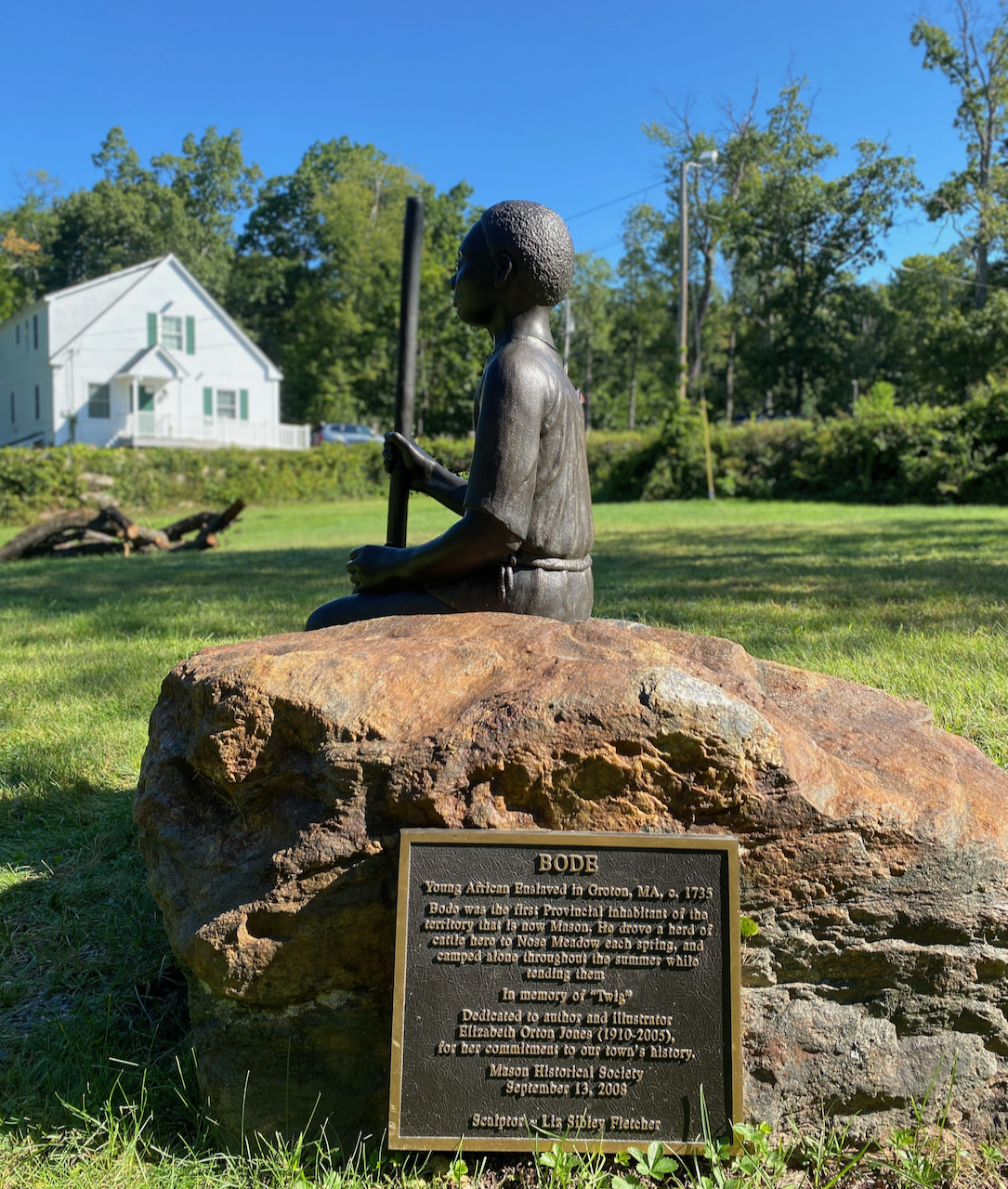Bode, a young enslaved African, spent his summers alone tending cattle in the New Hampshire wilderness for farmers in Groton, Massachusetts. At the time, Mason, New Hampshire was part of Groton, known as Groton Gore.
Each spring from 1734 through 1740, the cattle would be driven to pasture in Mason, twenty miles from Groton. There Bode would stay, spending months all alone, until the fall when the farmers returned to collect the cattle.
Overlooking Nose Meadow, his encampment was located in the present village center. In the 1730s, before the New Hampshire state line was drawn and before the Town of Mason incorporated, Bode was the first recorded colonial inhabitant of the land.
Little is known of Bode after his time tending the cattle; however, year later his name was referenced in a will for the husband of Mrs. Love Lawrence of Groton. Responsible for the support of the people he enslaved, and following the direction of the will, Mrs. Lawrence made payments to Bode in 1787 and 1789.
In 2008, a bronze state of Bode created by local award-winning sculptor, Liz Fletcher, was installed in the village center overlooking Nose Meadow. At the dedication, the Mason Historical Society explained:
“[The] sculpture of Bode [was erected] in honor of noted children’s author and illustrator Elizabeth ‘Twig’ Orton Jones, who died in 2005. Twig was a founder of the Mason Historical Society and edited and wrote the Mason, New Hampshire Bicentennial History in 1968. Twig did much research about Bode and would come to Mason’s Elementary School to tell the children his story. She wanted them to know that when Mason was a wild place with wolves and bears, a young man from Africa came and lived here alone, braving the elements to do his job.
Twig always wanted a sculpture of Bode to be seated on a rock in the place where he used to watch over the cattle, to remind people of the town’s beginnings, and the courage of a young man who lived here alone long ago. Bode must have been a capable young man, skilled with animals and resourceful to keep them safe all by himself through months in the wilderness. He did this job for seven years, until the state line was drawn in 1741.”
Source: The History of Bode and of His Sculpture, Mason Historical Society, Disowning Slavery: Gradual Emancipation and Race in New England

